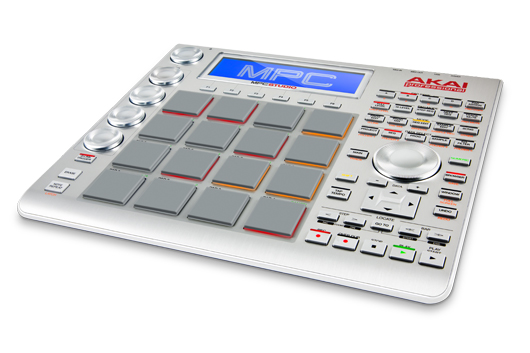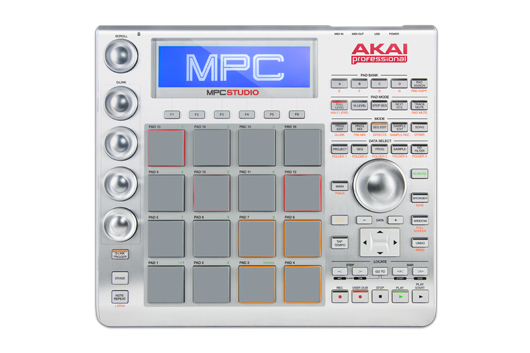Review: Akai MPC Studio
In its 2013 rebirthing of the venerable MPC line, Akai has released a slew of […]

In its 2013 rebirthing of the venerable MPC line, Akai has released a slew of beat machines meant to both maintain and elaborate upon the platform’s time-tested workflow. The MPC Studio—which fits somewhere between Akai’s tricked-out MPC Renaissance and its diminutive MPC Fly iPad accessory—is a slimline, USB bus-powered MIDI controller that’s plenty powerful and small enough to fit in a backpack.
How It Looks
Despite being just an inch thick, the Studio feels sturdy. Its brushed aluminum and plastic case feels like it can withstand plenty of finger drumming on the pads which, importantly, feel every bit as good as you’d expect (they’re the same as you’ll find on the more expensive Renaissance). There are still eight pad banks, four of which you access with the shift key function, and each lights up as yellow, orange, green, or red to show velocity and event data. A large LCD screen provides all key track data, meaning that it’s easy to work on the unit without looking at the computer screen. That said, an articulating screen would have been nice; as with many screens of this sort, it’s meant to be viewed from directly above. Also, unlike the Renaissance, there’s no built-in audio interface here, so any extensive sampling will likely require a computer’s native inputs or a separate external interface. Finally, the option to use the Studio as a standalone, portable beat machine would have also been welcome.
How It Sounds
As with the MPC Renaissance, The Studio pairs nicely with Akai’s MPC Software. The two were built hand-in-hand, and Akai offers 128 tracks to sequence, with an included 6GB of sounds and samples. The software works either standalone or as a VST/AU plug-in inside a DAW; while it isn’t quite as polished as that of, say, Maschine, it’s every bit as deep and sophisticated. Whether it’s chopping samples, recording beats, adding FX, or chaining patterns into a song, the workflow is all intuitive and very much in line with the old hardware. After some familiarizing, it’s easy to work without looking at the computer, while also having the option of turning to the screen when the real estate is needed for time-stretching or overall song construction. As hoped, the swing options sound very close to the original models as well.

The Bottom Line
The Studio is a solid alternative to Native Instruments’ Maschine, especially for those who grew up on Akai hardware. While there’s more competition out there than back when Akai dominated the beat-making landscape, the Studio is significantly more portable (and cheaper) than Ableton’s Push or Akai’s own Renaissance, and it still brings the familiar MPC workflow to the table. Whether it’s Ableton, Native Instruments, or Akai, the beat-machine hardware and software is impressive across the board. The decision, then, is figuring which best suits any given production process.
MSRP: $599

